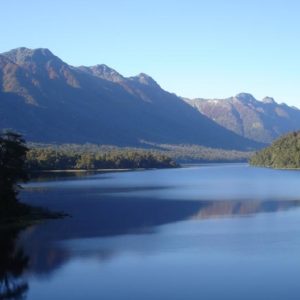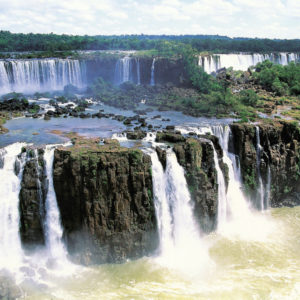Video courtesy of Visit Agenitina tourism
Known as the Land of the Gauchos, and once the economic powerhouse of the continent, Argentina maintains a sense of refined elegance more commonly associated with European countries. The city of Buenos Aires is more often than not the entry point for those exploring the world’s eighth largest country, and one could not hope for a more invigorating introduction. Those curious to explore the city will be rewarded by a visit to the refined districts of San Telmo, Recoleta and the colourful La Boca, before enjoying an energetic tango show or a visit to any of the city’s world class restaurants.
From Buenos Aires all major destinations can be accessed with ease, starting with the impressive Iguazú Falls where 275 separate cascades make them the world’s widest, prompting Eleanor Roosevelt to comment “Poor Niagara” upon witnessing them for the first time. Argentina’s increasingly important wine country surrounding Mendoza is home to Argentina’s very own Malbec grape, and with the breathtaking backdrop of the Andes catching the evening light, the city is a wonderful base for exploring the surrounding vineyards in style. Continuing south, the whale watching opportunities of Peninsula Valdes and the expansive forests and lakes of Bariloche provide a scenic welcome to Argentine Patagonia, before heading into the altogether harsher and more desolate southern regions. El Calafate is the basis for a visit to Perito Moreno, one of the world’s few advancing glaciers that can be seen calving vast walls of ice from surprisingly short distance, whilst a trip onto the glacier itself is available for the more adventurous. This inspiring country concludes on the Beagle Canal where Ushuaia, the world’s southern most city is found looking over these historic waters and provides the access to the final continent, Antarctica.
Argentina truly is a land of superlatives, and for those looking for a blend of chic cities, magnificent landscapes and exuberant culture Argentina provides all of this and much more.
Buenos Aires is a year round destination with mild winters (May – September) and hot summers (November – March) whilst the spring and fall months in between remain warm.
Iguazú falls can be visited year round although the summer months (November – March) can be particularly hot and humid, and the falls have their highest flow at this time of year. The winter months of June through September offer milder temperatures whilst the flow of water is lower than during the summer.
The mountainous Lake District is cool all throughout the year, enjoying a northern European climate. Here, April through June are the months of heaviest rainfall. November through March is considered the best travel time, but is also the time of year that attracts the biggest crowds.
Atlantic Patagonia is mainly cool, with unpredictable changes of weather throughout the year, while the best time to visit the Peninsula Valdés natural reserve depends on the fauna viewing more than on the weather. Whale watching usually takes place between late June and late November while penguin watching is between December and March every year.
Southern Patagonia experiences extremely cold winters (May – September) with much of the infrastructure closed at this time of year. The summers attract the largest crowds as well as the strongest winds whilst the shoulder seasons of spring (September-November) and fall (March – April) see reduced winds as well as colourful landscapes with flora coming into flower.
Central Argentina offers a continental climate and Cordoba and Mendoza can be visited all year round. Winter in both destinations presents cool mornings and evenings with mild afternoons. In the wine country surrounding Mendoza, the harvest takes place in February and March.
Northwest Argentina is best visited during the winter months of April – September when the climate remains predominantly dry and pleasantly warm whilst the summer months of November – March bring hot temperatures and some overcast and rainy days.
Showing all 2 results


